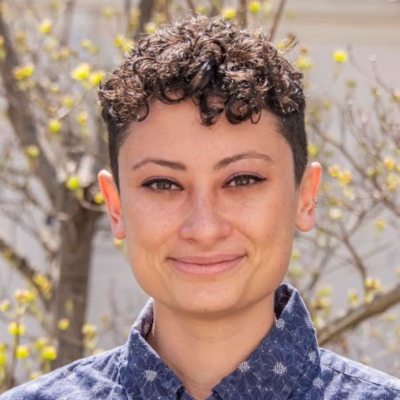A Changing Climate Means A Changing Society. The Island Press Urban Resilience Project, Supported By The Kresge Foundation And The JPB Foundation, Is Committed To A Greener, Fairer Future. This Article Was Originally Published June 19, 2019 On Greater Greater Washington as part of the Urbanist Journalism Fellowship.
In the heart of Columbia Heights, a new apartment building offers residents and nearby community members an unexpected service: Resilience. Jubilee Housing, a non-profit that creates deeply affordable housing for low-income residents, has joined with New Partners Community Solar Corp. to create a “resiliency center” inside The Maycroft Apartments.
A resilience hub or center is a facility that serves as point of resource distribution in case of a natural or manmade emergency. This one includes solar panels on the roof and enough batteries, funded by Pepco, to sustain the first floor community center for three days should the power go out city-wide. The building provides affordable housing for 64 families, and 40 of the units have rents between $600 and $700 a month. It’s the first initiative of its kind in DC.
What is resilience, and why is a resilience center important?
Should the power grid that provides electricity to the area shut down, The Maycroft has a battery storage system that would keep vital electricity running for up to three days, though only for crucial things like common lights, elevators, and the building’s emergency system.
Residents of The Maycroft can come to the resilience room located on the first floor to charge their phones, monitor the news, or store medicines in a refrigerator. The space can also be used to provide basic services like medical assistance, childcare, and a kitchen to cook food.
Resilience has become a buzzword in the last few years as cities and countries prepare for what the UN is calling an impending climate catastrophe. The Rockefeller Foundation established 100 Resilient Cities (100RC) to help cities respond and prepare to coming climate emergencies. DC is a member of 100RC and has begun planning resilience strategies for the city.
On April 29, Mayor Muriel Bowser announced the first urban resilience strategy for the city that “is organized around three main drivers of change: economic and population growth; climate change; and technological transformation,” according to a press release. One of the first initiatives, called Resilient Rivers, focuses on developing riverside communities to be able to withstand flooding caused by climate change.
Community Solar in Action
Even without a disaster, the array of solar panels on the Maycroft’s roof save residents $40-50 each month on their electricity bill through solar credits. The solar panels work by converting energy from the sun into electricity. The electricity gets diverted by into the power grid operated by Pepco and is then redistributed to residents in the building, cutting down on greenhouse emissions.
The Maycroft array works with solar energy generated by other New Partners solar arrays in the District. The energy is distributed to low-income Jubilee residents for free thanks to the DC’s Solar For All Community Solar initiative. The solar panels also provide a small daily charge to the batteries during normal, non-emergency conditions. This electricity is stored in the batteries, and in the case of an emergency, it keeps the generator running for crucial systems mentioned above.
But the solar power generated by the panels is only available when the array is connected to a working power grid. If there is a blackout due to a storm or other disaster, the New Partners solar system is automatically shut down.
That’s where the batteries come in. According to Jeffrey Lesk, one of the founders of New Partners, a solar plus battery storage system would temporarily solve that problem. That lead to the partnership between Jubilee and New Partners.
“Rather than being shut down during [a] power outage, the solar array continues to produce renewable energy—but it is ‘islanded’ to power the battery,” Lesk told me in an email. The Resiliency Center receives power from the batteries and becomes independent from the solar and power grid, essentially becoming self-sustaining.
For Sam Buggs, a resident of The Maycroft who lives on a fixed income, the combination of resilience and solar power offers a unique and rewarding situation. “It’s a great opportunity,” he told me over the phone, “Every dollar goes to paying bills, so having the opportunity to save money is outstanding. It also makes us feel special to have the Resiliency Center in the building.”
Equity should be a priority as the District plans to become more resilient, as low-income people are most affected by climate change. Services like the Resiliency Center could help residents and neighbors in an event of an emergency, while longer-term solutions like solar panels for low income households could benefit struggling communities for the long haul.



